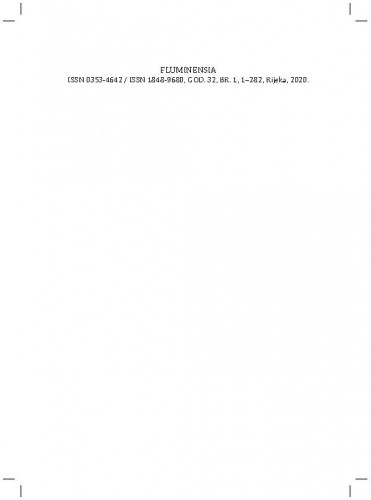Rad se bavi scenografskim čitanjima kazališnih uprizorenja romana Nedjeljka Fabrija na primjerima predstava Vježbanje života u režiji Georgija Para i izvedbi Hrvatskoga narodnog kazališta Ivan pl. Zajc u Rijeci, Berenikina kosa u režiji istoga redatelja i izvedbi Hrvatskoga narodnog kazališta u Zagrebu, te Smrt Vronskoga u režiji Ivice Boban i izvedbi Hrvatskoga narodnog kazališta Ivan pl. Zajc u Rijeci. Scenografije spomenutih predstava oblikovali su istaknuti hrvatski scenografi Zlatko Kauzlarić Atač (Vježbanje života, 1990., Berenikina kosa, 1995.) i Dalibor Laginja (Smrt Vronskog, 1995.), bitno pridonijevši kazališnoj transpoziciji romana na scenu.; The paper focuses on the scenography in stage adaptations of Nedjeljko Fabrio’s novels, i.e. on the scenography of Zlatko Kauzlarić Atač in Vježbanje života (Practicing Life) directed by Georgij Paro in the Croatian National Theatre Ivan pl. Zajc in Rijeka (1990), and in Berenikina kosa (The Berenice's Hair) also directed by Georgij Paro in the Croatian National Theatre in Zagreb (1995), and the scenography of Dalibor Laginja in Smrt Vronskog (The Death of Vronsky) directed by Ivica Boban in the Croatian National Theatre Ivan pl. Zajc in Rijeka (1995). The scenography of each mentioned stage adaptation is meticulously analysed and studied in terms of its general ideas and practical outputs, its functions in the theatre production, its relation towards the individual production elements, its place in the designer’s opus, and its critical reception. The study reveals that the analysed designs contributed significantly to the stage adaptations of Fabrio’s novels by articulating Fabrio’s ideas and concepts, material and metaphorical transposition of production’s ideas, utilising, organising and modelling stage space, dramaturgical functionality, as well as visual expressiveness and effectiveness of the production.
Sažetak

 Fluminensia : časopis za filološka istraživanja : 32,1(2020) / glavni i odgovorni urednik Aleksandar Mijatović.
Fluminensia : časopis za filološka istraživanja : 32,1(2020) / glavni i odgovorni urednik Aleksandar Mijatović.